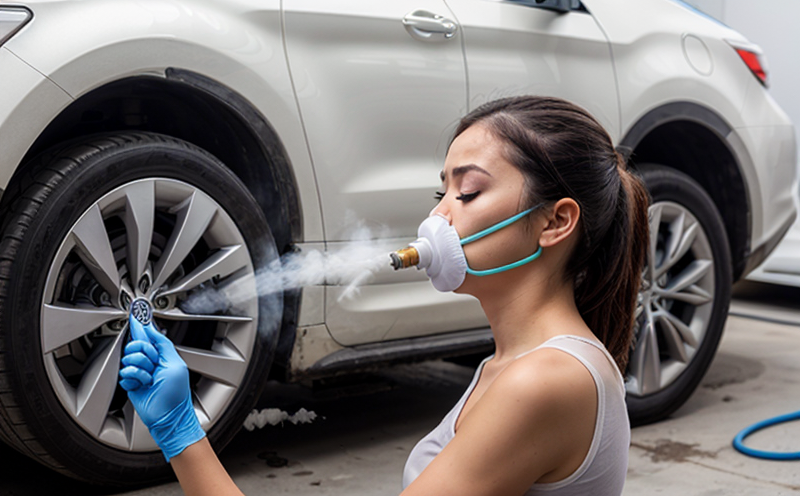EN 14385 Mercury Emission Testing from Stationary Sources
The European Standard EN 14385 provides a method to determine the mercury emissions from stationary sources. This standard is crucial for ensuring compliance with environmental regulations and reducing air pollution, which can have severe health implications.
Mercury emission testing involves measuring the concentration of mercury in flue gas or exhaust gases from industrial processes. The test helps identify whether a facility's emissions comply with national and international standards. By adhering to these standards, facilities contribute positively to public health by minimizing exposure to toxic elements like mercury.
The process typically begins with sampling the exhaust gases at specific points within the plant or process. Once collected, these samples are analyzed using sophisticated analytical instruments designed for trace metal detection. The results provide a quantitative measurement of mercury present in parts per billion (ppb).
Understanding how EN 14385 applies to different types of stationary sources is important. For instance, power plants, waste incinerators, and certain manufacturing facilities must regularly conduct such tests as part of their ongoing compliance programs. Proper implementation ensures that operators are aware of any potential issues early on, allowing for proactive mitigation strategies.
When conducting these tests, it's essential to follow strict protocols outlined in the standard. This includes knowing how much sample is needed and what conditions must be met during collection. The equipment used plays a critical role too; high-quality instruments capable of detecting minute levels of mercury are necessary for accurate results.
The importance of accurate testing cannot be overstated, especially given the health risks associated with mercury exposure. According to the World Health Organization (WHO), even low concentrations can cause neurological damage. Therefore, ensuring reliable data through rigorous procedures is paramount.
In addition to its role in preventing harm from toxic substances, EN 14385 also supports broader sustainability goals by promoting cleaner technologies and practices across industries. By offering precise measurements of emissions, this standard enables companies to make informed decisions about reducing their environmental footprint.
For those involved in quality management or compliance officers responsible for overseeing emission testing programs, staying up-to-date with current standards like EN 14385 is vital. It ensures that operations remain compliant while continuously striving towards better performance.
To summarize, EN 14385 plays a key role in safeguarding human health and protecting the environment by providing reliable methods for measuring mercury emissions from stationary sources. Its implementation supports both regulatory compliance and sustainable development initiatives.
Why It Matters
Mercury is highly toxic, particularly in its elemental form, and can cause severe health problems if released into the environment without proper control measures. The importance of accurate measurement cannot be overstated when it comes to protecting public health.
Exposure to mercury through inhalation or ingestion has been linked to various adverse effects including neurological disorders, kidney damage, and developmental delays in children. Given these risks, regulatory bodies like the WHO have set strict limits on allowable levels of mercury in air emissions.
Compliance with standards such as EN 14385 is not just about meeting legal requirements; it's also an investment in long-term sustainability. By ensuring that facilities operate within prescribed emission limits, they demonstrate a commitment to responsible environmental stewardship which can enhance their reputation among stakeholders.
In addition to health considerations, there are economic reasons why accurate testing matters. Non-compliance could lead to significant fines and reputational damage for companies. Moreover, adopting best practices in emissions monitoring helps maintain efficient operations by identifying areas where improvements can be made.
Customer Impact and Satisfaction
Clients who engage our services benefit from comprehensive support tailored to their unique needs. Our team works closely with customers throughout the entire process, ensuring that all aspects of EN 14385 testing are conducted according to best practices.
- Sampling and sampling strategy consultation
- Instrumentation selection and calibration verification
- Data interpretation and reporting services
We understand that each customer's situation is different, which is why we offer flexible solutions designed to fit individual requirements. Whether you're a small business looking for basic compliance support or an international corporation seeking advanced analytics, we have the expertise needed.
Our approach focuses on delivering high-quality results consistently across all projects. This commitment translates into increased customer satisfaction and loyalty as clients see tangible improvements in their operations due to our efforts.
International Acceptance and Recognition
- European Union: EN 14385 is widely recognized across EU member states as a key standard for mercury emission testing. It forms part of the directive governing air quality.
- United States: While not officially adopted, many U.S. state regulations reference similar principles found in this European standard.
- China: Similar methodologies are incorporated into Chinese national standards for atmospheric emissions from industrial sources.





